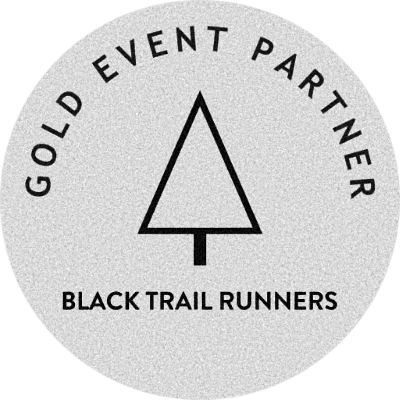Introduction
The Autumn 100 is a 100 mile continuous trail race based out of the villages of Goring & Streatley on the river Thames. The course reflects the shape of a cross and takes runners on a series of 4 different 25 mile out and back spurs using sections of both the Ridgeway and Thames Path National Trails.
Runners will depart from Goring at 1000 on Saturday 21st October 2017 and make their way on Spur one to Little Wittenham on the first out and back section on the Thames Path. On returning to Goring, runners will be faced with the more challenging second spur of the course, out to Swyncombe Farm on the Ridgeway before returning to Goring a second time. Spur 3 takes runners west on the Ridgeway to Chain Hill before returning to Goring for the final leg on the Thames Path to Reading and return for their 100 mile finish.
Course and Trail Conditions
The race starts at Goring and returns there every 25 miles. The course is designed as a series of 4 out and backs making use of Goring & Streatley's unique position, at the confluence of the Thames Path and Ridgeway National Trails.
Both trails are maintained by the National Trail Trust together with the various county councils and are open year round to the public, routed across a mixture of private land and public footpaths & byways. It is absolutely essential that runners respect the land & it's residents at all times on the course, espcially where either trail crosses private estates or residential areas. Noise should be kept to a minimum in those places.
The race at first travels to Little Wittenham on the Thames Path, traveling up through Wallingford, crossing the river at Benson Lock and making a turn around just before Days Lock, a remote point on the river where there will be a small aid station - before returning to Goring via the same route. The second out and back is on the Ridgeway, along the water initially before cutting in land past South and North Stoke, to Swyncombe aid station and returning to Goring once again. Spur 3 takes runners on the South Westerly Ridgeway path through Bury Down & East Hendred to Chain Hill aid station and returning to Goring. The final section of the course travels east through Whitchurch via the Village Hall aid station and Tilehurst, as far as the Waterside Centre on the Thames Path at Reading before heading back to Goring and the 100 mile finish.
1. The Course: The course is 100 miles in length, conducted on a mixture of riverside towpaths, crushed gravel, single track trail, wide farm tracks and tarmac. Due to around 60% of the course running parrallel with the river Thames during autumn, it is possible that there may be sitting water or even snow and ice on some parts of the trail.
2. Familiarity: Knowledge of the trail offers both physical and mental advantages during the race. Participants should make a reasonable effort to run as much of the trail as possible before race day. Particular attention should be given to spurs 2, 3 and 4, which runners can expect to run in the dark when mental and physical energy may be lagging.
3. Weather: Temperatures during the race could range from below freezing with rain and/or snow to 25 degrees celcius with high humidity, participants should be fully prepared for extremes. Weather conditions are unpredictable and can change rapidly. If it rains the ground will become wet, slippery and in places very muddy or even flooded, presenting a hazard to runners. It is likely to be extremely windy out on Spur 3 on the Ridgeway. There is often mist or fog over the meadows on leg four during the hours of darkness.
4. Hydration: Hydration will be crucial to your safety and enjoyment of the event. Even if it is cold it is extremely important to stay hydrated. The aid stations are positioned such that water is available at regular time intervals, always make sure you have the capacity to carry enough to cover the distance to the next aid station (please see medical notes further down this document on hydration/ salt intake balance).
5. Trail Markings: The major way marks on the course are provided by the National Trail infrastructure. Permanent finger posts at key junctions and turns as well as waymark posts with the acorn symbol are frequent and visible on all branches of the course. Centurion trail markings consist of reflective red and white tape, Centurion branded arrows and orange temporary chalk paint. Race staff do their level best to provide a marked trail, but it is necessary for runners to continually remain alert as they travel. On occasion, course markings may be removed or vandalised. Knowledge of the trail, looking out for waymarkers and a knowledge of how to read the maps which runners are recommended they carry at all times will be of infinite benefit to the runner. Runners are ultimately responsible to follow the correct course.
6. Dropping: If you have to drop out of the race you must do so at an aid station and where possible, at Goring. If you drop at an aid station away from Goring, we will bring you back to Goring, particularly if you are in need of medical attention. In non-emergency situations, you may have to wait several hours before being transported back so please be patient with our volunteers. All aid stations have cut offs and will close as soon as the cut off is reached. If runners are still behind on the course when a cut off is reached, the aid station crew will wait for them before departing. We will remain in situ until every runner is accounted for. We will give runners EVERY opportunity to make the cut off but if you are pulled from the race officially, you will have your number removed. Refusal to comply with volunteers or race management on this issue will result in a life ban from Centurion events. A full list of the cut offs can be found under the aid station section.
7. Trail Etiquette: Please be courteous to hikers, mountain bikers and other runners.
8. Volunteers: Volunteers will do everything possible to make your day a success. Many spend more hours out on the trail than do the runners themselves. Please be polite and make a point to thank them however tired you may be feeling. Without the volunteers, there would be no race.
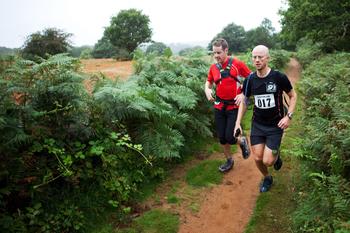
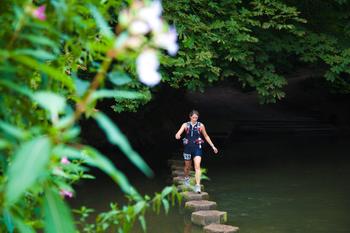
Rules
All rules are at the final discretion of the race management team. No challenges will be permitted.
1. There will be no unofficial runners. Unofficial runners will be banned from taking part in future Centurion events.
2. Each runners bib number must be worn on the front of the body and must be easily visible at all times.
3. Runners must follow the marked trail/ course at all times.
4. Each runner must complete the entire course under his or her own power.
5. Runners may not store supplies of any kind along the trail.
6. Each runner must be checked IN to all aid stations. DO NOT RUN PAST WITHOUT HAVING YOUR NUMBER TAKEN. You will be disqualified if you are not registered together with your time at every aid station.
7. Cut-off times will be strictly enforced. There are additional cut offs at EVERY aid station. Runners reaching the finish after the final cut off will not be listed as official finishers and will not be eligible for awards.
8. In addition to medical information provided by the runner during the online registration process, runners must fully disclose at race registration, changes to existing medical conditions and all prescription medications being taken.
9. Injection of fluids or drugs during the event will result in disqualification.
10. Runners compete in this event entirely at their own risk including but not limited to road crossings, river crossings and all other hazards of the trail.
11. Littering of any kind will result in immediate disqualification. Runners caught littering will be banned from all future Centurion events. Please respect the natural beauty of our trails and the right of everyone to enjoy them. Littering will threaten our use of the trails and the future of the race.
12. Any runner who is unable to finish the race must personally inform the aid station captain of the nearest checkpoint of his decision to withdraw. HE OR SHE MUST HAND IN HIS RACE NUMBER TO THE AID STATION CAPTAIN AT THAT TIME. This serves as official notice of a runner’s withdrawal from the race. Runners who leave the course without turning in their number will be classified as “lost,” initiating search and rescue.
13. Runners are responsible for the actions of their pacers. If your pacers are deemed to have broken any of the runner race rules or separate rules for pacers, the runner will be held accountable. Your pacers act on YOUR behalf and based on YOUR instructions.
14. Minimum Entry Age for all entrants is 21.
15. Pacers are permitted from Mile 50. Pacers may join a runner only at Mile 50 or Mile 75 and must cover either 25 or 50 miles (Leg Three and/ or Leg Four) with their runner. Pacer handovers are not permitted anywhere other than HQ at Goring at the start of either Leg 3, or Leg 4.
16. Runners must carry with them AT ALL TIMES the mandatory equipment required. There will be kit checks before the race and potentially again during and after the race. A time penalty of one hour will be imposed for any item found to be missing at any point on course.
There are many options regards kit for fulfilling these requirements and those of other events. We stock what we believe to be the best options at our online store available by clicking here under the Mandatory Gear Section. Please ask us if you have any questions.
- Fully Charged Mobile Phone including the numbers for the Race Medic and Race Director (on the number you have given at registration)
- Water Bottles/Bladder capable of carrying a minimum of 1 litre.
- Survival Blanket: 1.4m x 2m minimum
- Waterproof Jacket: Gore-tex or similar, minimum 10000mm+ & must have sealed seams.
- Whistle
- Headtorch or Primary Light Source
- Back Up Light source - Minimum 25 Lumens
- Warm Hat - Beanie Hat or Buff (either are accepted)
- Gloves
- Base layer or fleece top - This must be carried separately from the start and kept dry, for use only in an emergency. Starting in 2 layers is not a substitute.
- The race is cupless which means you must bring a cup with you. Soft cups are available at the store here.
Strongly recommended but not mandatory:
- Route Map - Should be a hard copy that you are able to navigate from and not a map on your phone. We advise the Harveys Maps available here. You will require the Thames Path and Ridgeway Editions for this event.
- Compass - This should be a separate physical compass and not electronic/ on your phone.
17. There will be mandatory gear checks at the start, on route, and/or at the finish. Failure to comply with the gear checks will result in disqualification.
18. Runners are not to be accompanied by dogs at any time whilst on course.
19. Runners are not permitted to have a crew at any stage of the race.
The Thames Path & Ridgeway trails are used by, but not limited to, horse riders, walkers and mountain bikers. Please be aware of other people whilst you are running and be as polite and courteous as possible to them, making way when necessary, particularly to horses. You do not have priority over any other users out on the course, most will be totally unaware of the event taking place. All gates must be properly closed after you have gone through.
Support Crews
Crews are not permitted at any stage of the race.
Pacers
Pacers are permitted from Mile 50. Pacers may join a runner only at Mile 50 or Mile 75 and must cover either 25 or 50 miles (Leg Three and/ or Leg Four) with their runner. Pacer handovers are not permitted anywhere other than HQ at Goring.
Pacers are allowed solely as a safety consideration for fatigued runners. Absolutely no physical or mechanical aid may be given by the pacer to assist the runner over difficult sections of the trail except in medical emergencies.
Pacers should be experienced trail runners in excellent physical shape and conditioned adequately to run in potentially difficult weather conditions over considerable distances - in this case a minimum of 25 miles. Most pacing will be done during night time hours and early morning; so pacers should be warmly dressed, used to running with lights, and familiar with the trail. Pacers should be adequately supplied with headlamps, food and water. It is strongly recommended but not a requirement, that pacers carry the same mandatory gear as their runner. They may accept aid at the aid stations.
RULES FOR PACE RUNNERS
1. A pace runner is any individual who accompanies an entrant for any distance greater than 100 yards at one time.
2. One pacer at a time may accompany each runner from the 50 mile aid station (Goring) through to the finish.
3. Pacers may not meet runners anywhere other than Goring HQ at either Mile 50 or Mile 75.
4. Handovers are not permitted apart from at the end of Leg Three/ 75 Miles.
5. NO MORE THAN ONE PACER may accompany the runner at any time.
6. Pacers must be at least 18 years of age.
7. Pacers can travel ON FOOT ONLY and must enter and leave each aid station with their runners.
8. No mechanical or physical assistance may be given by the pacer to the runner at any time.
9. Please respect the trails; littering of any kind is strictly prohibited.
PACERS MUST COMPLY WITH ALL RUN RULES AND REGULATIONS, INCLUDING THE RULES, RULES FOR PACERS AND ALL INSTRUCTIONS FROM RACE STAFF.
Medical
The Autumn 100 is an extremely challenging event and participation presents numerous medical risks, many of which can be extremely serious or fatal.
Participation in this event is at the runner’s own risk. Although medical personnel are positioned at various points along the course, the inaccessibility of much of the trail will make it difficult or impossible for medical assistance to reach the runner immediately. Runners must be capable of self sufficiency, confident of running alone at night on technical trails and sufficiently trained to cover the distance presented.
Medical support at the race is under the direction of the Race Medical Director who’s details to be used in an emergency will be made available to all runners at registration, further to that of the Race Director.
The medical provision on for the weekend is provided by GB Emergency Medical Services. At any one time during the race there will be a minimum of one ambulance/ medical support car on call. There will also be a static medical team at Goring, mile 25/50/75 & the finish from the time of the first runner on loop 1, to the time of the last finisher. In addition there will be roving medical crews out on course.
It is important for each entrant to recognise the potential physical and mental stresses, which may evolve from participation in the race. Runners may be subject to extremes of cold, hypothermia, hyperthermia, dehydration, hypoglycemia, hyponatremia, disorientation and mental and physical exhaustion. We and the medical staff strive to work with runners and will do all we reasonably can to ensure “safe passage” to the finish line, but ultimately runners must understand their own limitations. Adequate physical and mental conditioning prior to the race is mandatory. If you have not been able to prepare properly, do not attempt to run.
Runners should appreciate the risks associated with participation in this event. Actions may have to be taken on your behalf under extreme time constraints and adverse circumstances. We will make every effort to give assistance whenever possible but ultimately and primarily you are in charge, and you are likely to be solely responsible for creating your own crisis that we must then respond to. Be careful, be responsible, and do not exceed your own abilities and limitations. IN THE EVENT THAT A RUNNER REQUIRES EMERGENCY EVACUATION, THE RUNNER ASSUMES ALL FINANCIAL OBLIGATIONS CONNECTED WITH THIS SERVICE. CENTURION RUNNING IS NOT RESPONSIBLE FOR ANY DEBTS INCURRED. Runners should have adequate insurance in place to cover those eventualities.
Some of the main risks, but certainly not all of them, are listed here. These should be understood and remembered by all runners, before and during the event. Please note that death can result from several of the risk conditions discussed below.
1. Renal Shutdown: Renal shutdown occurs from muscle tissue injury which causes the release of myoglobin, a protein material, into the blood plasma. Myoglobin is cleared from the blood stream by the kidneys and will look brownish-colored in the urine. Adequate hydration will help flush myoglobin through the kidneys. Overwhelming amounts of myoglobin may clog the filtering system of the kidneys either partially or totally. If not treated, renal shutdown can cause permanent impairment of kidney function. IT IS CRUCIAL TO CONTINUE HYDRATING USING ELECTROLYTE FLUIDS DURING THE FINAL HOURS OF THE RUN AND FOR SEVERAL HOURS/ DAYS FOLLOWING THE RUN OR UNTIL THE URINE IS LIGHT YELLOW AND OF NORMAL FREQUENCY. There is extensive research to support the claim that NSAIDs (ie. ibuprofen/ paracetemol etc) greatly increase a runners chances of reaching a stage of renal shutdown. We will not provide Ibuprofen or paracetemol at any aid station and you are strongly advised not to take it during or immediately after the run. More information on this subject can be obtained by contacting the race director.
2. Effects of Cold/Hypothermia: Temperatures may drop well below 0 Degrees Centigrade during the day and particularly the night portion of the Run. With wet conditions and/or moderate to high winds runners will be open to severe exposure during the event. Hypothermia is a serious risk, especially at night and in the wet since one’s energy reserves will have been depleted from 24 or more hours of running. Hypothermia can strike very quickly, particularly when pace slows from exhaustion or injury. The initial warning signs of hypothermia often include lethargy, disorientation and confusion. The runner will feel very cold with uncontrolled shivering and may become confused, unaware of the surroundings, and may possibly be an immediate danger to his or herself. Staying well-nourished, adequately hydrated and appropriately clothed will help avoid hypothermia. It is essential that runners carry warm clothing with them at all times on the course and where possible to have access to warm clothing tin their drop bags.
3. Risks Associated with Low Sodium and Chloride Counts: Low sodium levels (hyponatremia) in ultramarathon runners have been associated with severe illness requiring hospitalization. It is important for long-distance athletes to use fluids or eat foods containing electrolytes/ salt to replace the water and salts lost during exercise. Water intake alone is not sufficient, as water intoxication and possibly death may result. This problem may in fact worsen after the Race, as the non-electrolyte-containing fluid which has been accumulating in the stomach is absorbed. Potassium and calcium replacement may also be important, although these levels change less with fluid loss and replenishment. Signs and symptoms of hyponatremia include; weight gain, bloating, nausea, vomiting, headache, confusion, lack of coordination, dizziness, muscle twitching/cramping and fatigue. If left untreated, it may progress to seizures, pulmonary and cerebral edema, coma and death. There are two ways to put oneself at risk of hyponatremia; 1) over-hydration (with water or even electrolyte-containing sports drinks) and 2) replacing sweat with hypotonic fluids. Risks of hyponatremia include weight gain and low sweat rate.
Risks of hyponatremia can be minimised by eating salted foods a few days prior to the race, matching fluid and electrolyte intake to sweat losses and monitoring weight. The best way to achieve proper electrolyte and fluid balance is to hydrate with fluids containing proper amounts of electrolytes and to replace with sodium-containing foods or supplements, if required, and as determined during your training. Electrolyte fluids should be consumed for a good period (a few hours) after the race. Once the gut is working and adequate hydration has occurred, the normal balance of thirst, hunger, digestion and kidney filtration will maintain the proper balance of fluids and electrolytes. Water or dilute sports drinks should be consumed only after the onset of urination.
4. Vehicle Hazards: Much of the trail is near to, crosses or travels along roads which are NOT marshalled. There are therefore several areas on the course where runners and pacers must be watchful for automobiles. Runners cross all roads at their own risk.
5. Use of Drugs: No drugs of any kind should be taken before, during or immediately after the race. Many drugs can increase the risk of heat stroke. A partial list of problem drugs include amphetamines, tranquilizers, and diuretics.
7. Injuries from Falling: Falling is an ever-present danger on trails, with potentially serious consequences. Much of the trail is narrow, uneven and rutted and there are some sections of stairs where particular attention is required. The course may be covered with snow, ice or sitting water which will create significant challenges and potential hazards to runners.
8. Overuse Injuries: Obviously, innumerable overuse injuries can occur, especially in the knee and the ankle. Sprains and fractures can easily occur on the trails. Blisters may also halt progress.
9. Common Fatigue: One of the dangers you will encounter is fatigue. Fatigue, combined with the effects of dehydration, hypothermia, hyperthermia, hyponatremia, hypoglycemia and other debilitating conditions can produce disorientation and irrationality.
10. Difficulty in Gaining Access to or Locating Injured Participants: Much of the trail is inaccessible by motor vehicle. Accordingly, in spite of the many layers of safety precautions instituted by the race management, there is no assurance that aid or rescue assistance will arrive in time to give you effective assistance should you become sick, incapacitated or injured.
What to do in a Medical Emergency:
If there is a problem and you need the Medical Team either to attend or just for advice, call: 07040 900 402 at ANY time during the event.
This will put you through to the Event Medical Team Leader who will co-ordinate any response and/or give advice, Our team will be happy to talk you through Emergency Aid Procedures on the phone whilst they are on their way to you.
If you are ill/injured or have found someone who is ill/injured and need the medical team to attend your location, we’ll need to know the following:
- Your Phone Number (In case we need to call you back)
- Where You Are (Preferably Sat-Nav’able Location, e.g. Outside the Church on South Street in Redhill or 1 Mile along the route from where it crosses the A3), we’re also able to access Lat/Long if you have a GPS with that capability.
- Your name and/or Runner Number and that of the Casualty if Different.
- What’s wrong? What do you need the medical team for?
- If you are not the casualty, but have found them, please stay with them until help arrives, whilst this may impact on your personal best, at least you’ll have a good excuse
Make the casualty as visible as possible and keep them warm, It is mandatory for each runner to carry a “Foil Blanket” which should be used if you're in any doubt at all.
Do not allow the casualty to move UNLESS they are in an unsafe position, e.g. in the middle of a busy road and there is no other option.
Do not give the casualty anything to eat or drink until the medical team arrive as they may require surgery or medical procedures at hospital and food/drink will delay this being able to happen.
Be ready to flag down the Medical Team when they are close by.
The phone used to call the Medical Team must remain with the casualty until the medical team arrives, if we’re having difficulty finding you, we will call you back.
Calling 999
General Rule: If the Casualty is NOT BREATHING, is likely to STOP BREATHING imminently, call 999 for the Ambulance Service, then the Event Medical Team (We ask that you call both because we may be close by and can assist until the 999 Service Arrives), for all other Injuries/Illnesses, call the Event Medical Team on the above number FIRST and we’ll take it from there.
If you just need advice, give the Medical Team a call on the number above, or speak to one of the marshalls.
Non-Medical Risks and Dangers
There are other significant risks to runners during the race which do not fall under the medical category. The major ones are listed here and all runners should be aware of these prior to race day.
1. Social Hazards. The course makes its way through many small towns and villages as well as many more remote sections of countryside. There is always the opportunity for undesirable characters to be on or around the trail and the chance that they may cause trouble for runners. For that reason we advise all runners to avoid running alone at night. Runners who want to listen to music should use headphones during the daylight sections only and be aware of their surroundings at all times on the trail. We recommend all runners have a pacer from mile 50 onwards if they can. Aid stations captains will offer those that want it, the option of buddying up with other runners, right through to the finish should you wish. If you are in any doubt, wait for the next runner to come through and traverse the next section with them. You can then either await another buddy runner arrival or continue on.
2. Getting lost. Whilst the course is marked, runners must be prepared to follow the National Trail waymarkers as the principal source of navigation, remembering that the acorn is the symbol of the National Trail. The Thames Path and Ridgeway are the major trails through this area. Race Management does its best to provide a marked trail, but it is necessary for runners to continually remain alert as they travel. On occasion, course markings may be removed or vandalised, or we cannot place signage at a critical turn on the day due to unusual circumstances. Knowledge of the trail, particularly of those miles that will be covered in the dark, will be of infinite benefit to the runner. YOU are ultimately responsible for following the correct course.
Aid Stations
These type of running events survive because of the incredible volunteers who work the aid stations. Without them there would be no race. There are a total of 16 aid stations, including the start and finish location.
In almost all cases, aid station volunteers have either running, crewing or medical experience and have been fully briefed as to what runners will require during the race. The aid stations are well stocked with fluids and a variety of foods. The fluids that are generally available are: water and coke as well as tea and coffee from mile 25 onwards. There will also be hot food available at Goring at mile 50, 75 and the finish. The foods that are generally available are: Salt replacement foods, a limited number of GU energy gels, fruit, cookies, chocolate bars, jelly babies, nuts, sandwichs, wraps etc.
The use of Ibuprofen can lead to kidney problems when used in abundance and/or under stressful conditions such as running long distance races. We will not provide these medications at our aid stations. If you feel the need to bring and use your own pain medications or anti-inflammatories, then you are willing to assume the responsibility for their use.
Dropbags
THE RACE TEAM ARE NOT RESPONSIBLE FOR LOST OR DAMAGED DROP BAGS AND THEIR CONTENTS
Drop bags for the Autumn 100 are accesible at Goring. This is also the start and finish point as well as the 25, 50 and 75 mile aid station. Runners should bring ONE bag to the event, which must be securely tied, labelled clearly with the runner’s name and entry name and number. PLEASE keep the size of your drop bag as small as possible.
Runners may have one additional bag stored for them for the finish only. Access will not be possible to this bag during the race itself.
It is strongly recommended that additional warm/ dry clothing and an extra torch be placed in your bag.
Cut Offs
Cut-off and “pace” times are listed on the Aid Station Chart. Cut-off times reflect the deadlines for LEAVING the aid station. If you return to an aid station after the cut-off, you will be pulled from the race. The cut-off times will be strictly enforced by the Aid Station Teams. Anyone leaving an aid station after the cut-off time will be disqualified. This rule is for the safety of all participants.
IF YOU MISS THE CUT-OFF, YOU MUST STOP. If you continue without handing your number in to the aid station volunteers and therefore officially withdrawing from the race, you will be disqualified and will not be permitted to run in future Centurion events. If you do miss a cut off, the aid station captains will try to relocate you to where you need to go via the sweeper bus. Please remember however, that our first priority is to the runners still in the race and aid station personnel may well have dual duties at other aid stations to attend to once their station closes. Be patient with the driver and the volunteers.
Awards
All entrants who finish the race in full accordance with the rules qualify for awards given in recognition of their achievement.
1. All finishers in under 24:00:00 hours will receive a 100 MILES - ONE DAY finishers buckle and race shirt.
2. All finishers in under 28:00:00 hours will receive a 100 MILE FINISHER buckle and race shirt.
nb. Runners crossing the finish line after the 28 hour cutoff will not be listed as official finishers.
All prizes will be handed to runners as they cross the finish line, there will be no separate awards ceremony.
Male and Female Race winners will each be awarded the Centurion Trophy marking their achievement. There will be no separate Vet awards.
Schedule
Saturday 21st October
0700 - 0930 - Goring Village Hall
- Runner Check in & bib collection
- Drop Bag Deposit Open
0935 - Goring Village Hall
- Runner Briefing
1000 - The Morrell Room, Streatley
- Race Start
Sunday 22nd October
1400 - Goring Village Hall
- 100 mile 28 hour cut
21-10-2017
21-10-2017
21-10-2017
21-10-2017
21-10-2017
21-10-2017
21-10-2017
21-10-2017
21-10-2017
21-10-2017
21-10-2017
21-10-2017
21-10-2017
21-10-2017
21-10-2017
21-10-2017
21-10-2017
22-10-2017
21-10-2017
22-10-2017
21-10-2017
22-10-2017
21-10-2017
22-10-2017
21-10-2017
22-10-2017
21-10-2017
22-10-2017
21-10-2017
22-10-2017
21-10-2017
22-10-2017
21-10-2017
22-10-2017









